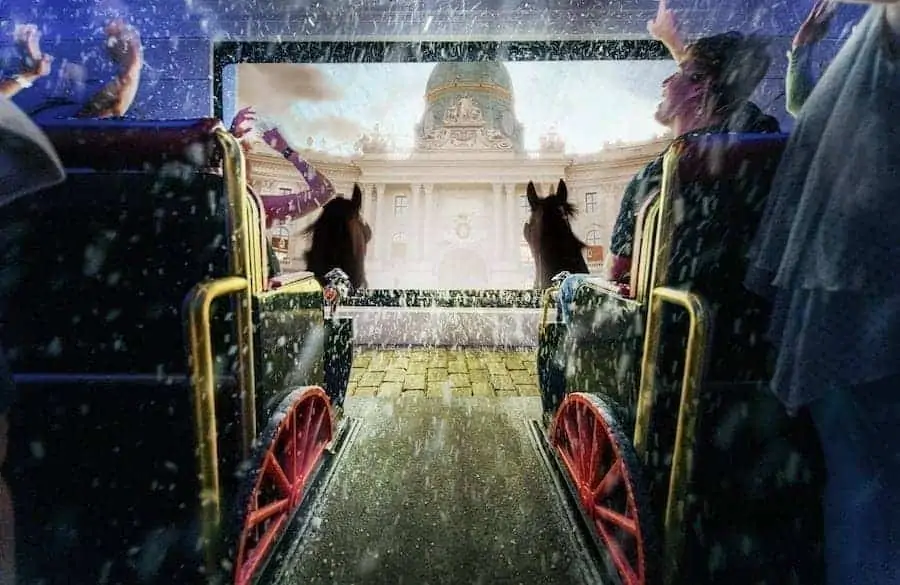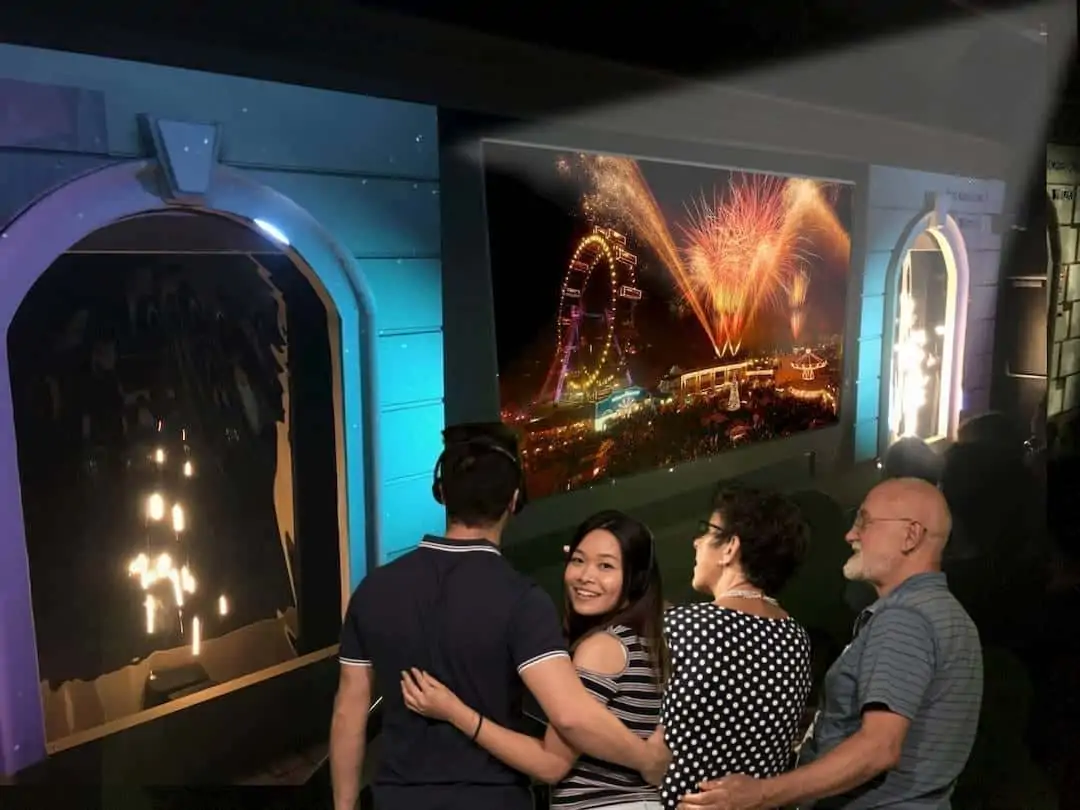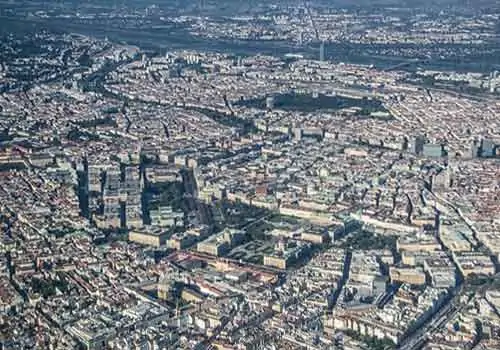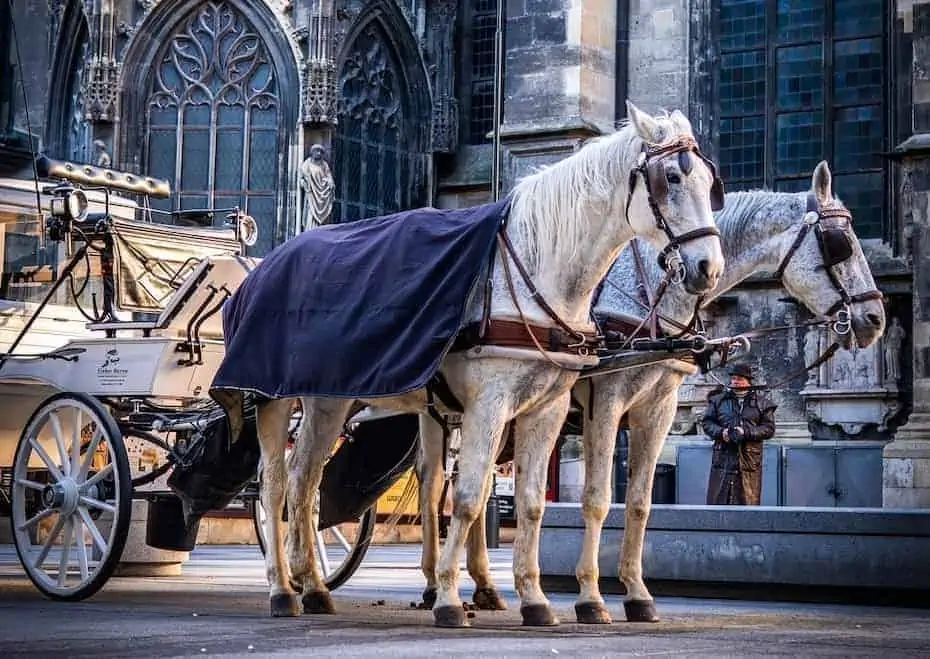Fiaker flight
Finally, take a seat in a cozy carriage and fly back to the present with the fantastic Fiaker Ride.

Explore Vienna from the air and experience fantastic views of the Hofburg, St. Stephen’s Cathedral, Schönbrunn Palace and the Vienna Prater. Enjoy the new Fiakerride with laser effects and 3D mapping. Experience fireworks at the end of your journey through time at Time Travel. The fantastic views over Vienna are unique and confirm that Vienna is one of the most liveable cities in the world.


Fiakers and Vienna today
We can look back on around 300 years of hackney carriage history in Vienna. Fiakers are to Vienna what gondolas are to Venice. The hackney carriage consists of three parts: Horses, carriage and coachman.
The term “Fiaker ” originally comes from the French, as the first stand for hired carriages was located in the Rue de Saint Fiacre in Paris. These were first used by a merchant as early as 1662. However, they were named after the Irish monk Fiacrius, whose picture was on the outside wall of the local inn. Saint Fiacrius was given heavenly patronage over this new profession.
The first hackney carriage license was issued in Vienna around 30 years later. In the 19th century, there were already around 1,000 hackney carriages in Vienna. Since the First World War, horse-drawn carriages in Vienna have mainly been hired for city tours, visits to the Prater (popular for confirmations) and special occasions (e.g. weddings).
The first female coachmen were introduced in 1984. The prices for the tours are set by the City of Vienna and the traditional clothing is also regulated by law. Since 1998, a driving test has been required in Vienna in order to work as a carriage driver.
Nowadays there are around 40 hackney carriage companies with 200 hackney carriages in Vienna. Many of these carriages are now over 100 years old.
There is even a Fiaker coffee among the 40 or so Viennese coffee specialties. This is a drink that consists of half black coffee and half whipped cream and is refined with rum.
Fiaker goulash is a popular Viennese dish. The Fiaker is and has been sung about in numerous Viennese songs.

Austria’s capital
With just under 1.9 million inhabitants, Vienna is the capital of Austria and also one of the nine Austrian federal states.
By 1900, Vienna already had over 2 million inhabitants, making it the fifth largest city in the world. At that time, Vienna was the imperial capital and was considered the cultural and political center of Europe.
Architecturally, Vienna is still characterized by the buildings around the Vienna Ringstrasse from the Gründerzeit, but also by Baroque and Art Nouveau. The Hofburg was the imperial residence for more than 640 years and is one of the largest building complexes in the world.
Today, the Hofburg is the seat of the Federal President and the Federal Chancellor. Around 15 museums are located here and a modern conference center attracts many guests from abroad. This was already the case at the Congress of Vienna in 1814/15, where Vienna played an important role in international diplomacy that has been preserved to this day.
The historic center of Vienna and Schönbrunn Palace are UNESCO World Heritage Sites. Vienna is associated with classical music. The Vienna State Opera is one of the most important and beautiful opera houses in the world.
Vienna is a green city, as almost 50% of the area is a green zone. The Prater, Vienna’s green lung, plays a large part in this. It is home to the Giant Ferris Wheel, one of Vienna’s landmarks, next to St. Stephen’s Cathedral. Vienna is considered a city with a very high standard of living and in recent years has consistently ranked as the city with the best quality of life in the world.
